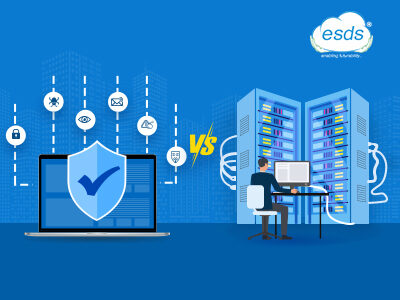A Guide to Understanding the Difference Between SIEM and SOC Solution
Do you feel overwhelmed with all the security acronyms floating around? SIEM and SOC are two of the most popular acronyms in the security world. But what do they mean and what is the difference between them? A SIEM (Security Information and Event Management) solution is a platform that collects, analyzes, and correlates security data from different sources. It helps organizations detect and respond to threats in a timely manner. On the other hand, a SOC (Security Operations Center) is a team of security professionals responsible for monitoring, analyzing, and responding to security incidents. In this guide, we’ll explain the main differences between a SIEM and SOC solution, so you can identify which one is the best fit for your organization.
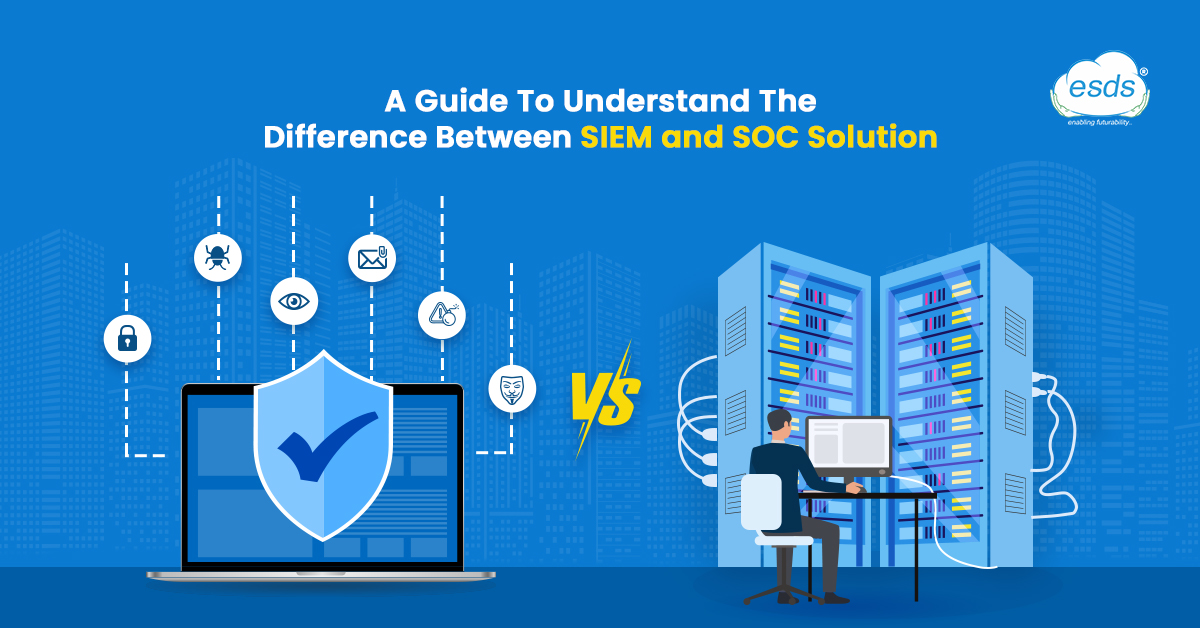
What is a SIEM Solution?
A SIEM solution collects, analyzes, and correlates different security data from different sources. It can collect data from network sensors, log management tools, endpoint security tools, etc. Once the data is collected, it’s sent to the central SIEM server where it’s stored and made available for analysis.
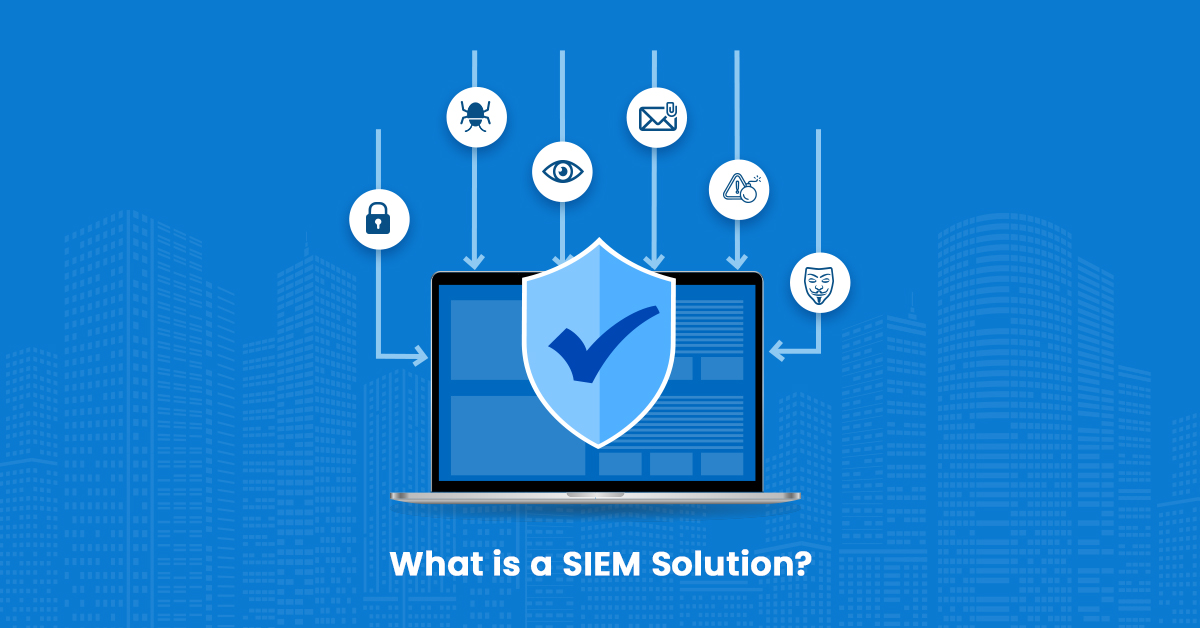
The SIEM solution provides a centralized view of all security events happening in your organization, regardless of the source of the data. The data collected by the SIEM includes security events like log data, network flow data, threat intelligence data, vulnerability data, etc. At the core of a SIEM solution is a security analytics engine. It’s responsible for normalizing and correlating the data collected from different sources. It’s an ideal solution for organizations with distributed IT environments. The SIEM solution allows security teams to centralize security data from different locations in the organization and correlate it with other data to identify threats.
SIEMs include the following critical information:
- Multi-source log aggregation
- Threat intelligence
- Organizing and correlating events to make analysis easier
- Advanced analytics visualization
- Customized dashboards for analytics
- A threat-hunting tool to identify currently compromised resources
- Investigation tools for cyber-incidents
What is a SOC Solution?
The term SOC refers to a Security Operations Center — an organization that manages security incidents. A SOC solution is an on-premises solution that is designed to detect and respond to security incidents. The SOC solution collects security logs, network flow data, vulnerability data, threat intelligence data, etc. It sends this data to different sources like SIEM, ticketing, or collaboration tools, and other systems.
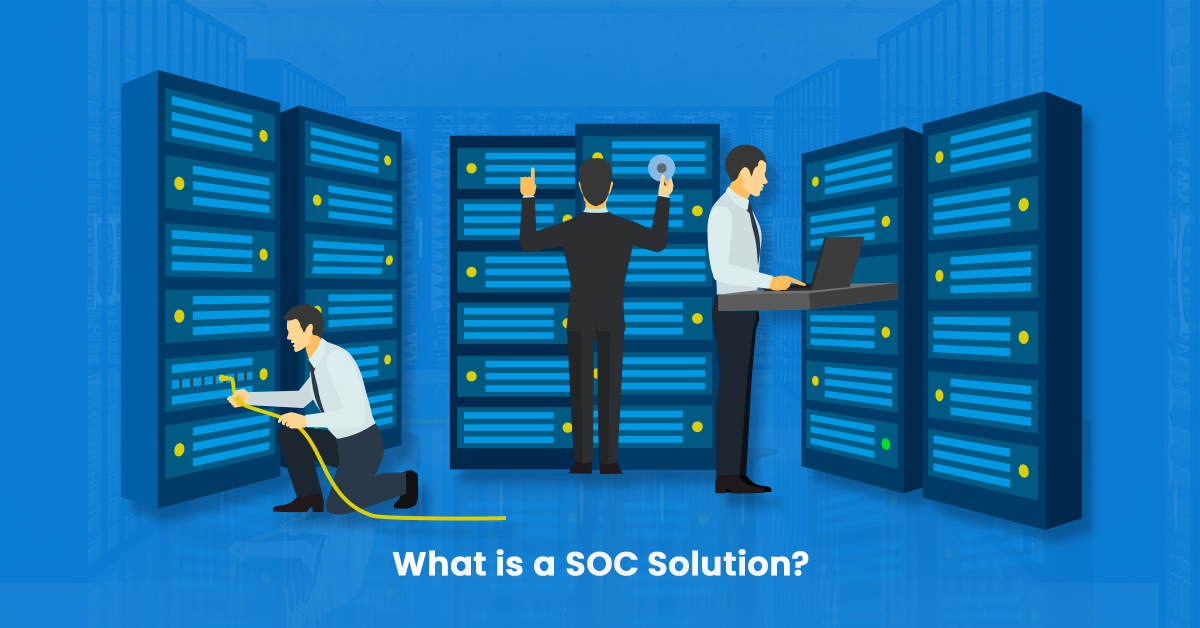
The SOC solution provides a centralized view of security incidents and real-time alerts. It’s a centralized tool that helps security teams, monitor, analyze, and respond to security incidents. The SOC solution is used by organizations that have their security operations in-house. It’s also an ideal solution for organizations with distributed IT environments. The SOC solution can be implemented on-premises or on the cloud.
A SOC performs the following standard functions:
- Network monitoring 24 hours a day, 7 days a week
- Maintaining cybersecurity appliances and deploying them
- Threat response during a cyber-event
- Threat containment and eradication
- Cyber-incident root-cause analysis
- Compliance assessment and management
The Main Differences Between a SIEM and SOC
The main difference between a SIEM and SOC is that a SIEM collects and correlates data from various sources, while a SOC collects data from various sources and sends it to a SIEM. Another difference between a SIEM and SOC solution is that a SIEM solution collects data from network sensors, log management tools, endpoint security tools, etc., while a SOC solution collects security logs, network flow data, vulnerability data, threat intelligence data, etc.
Do You Need a SOC or SIEM for Your Business?
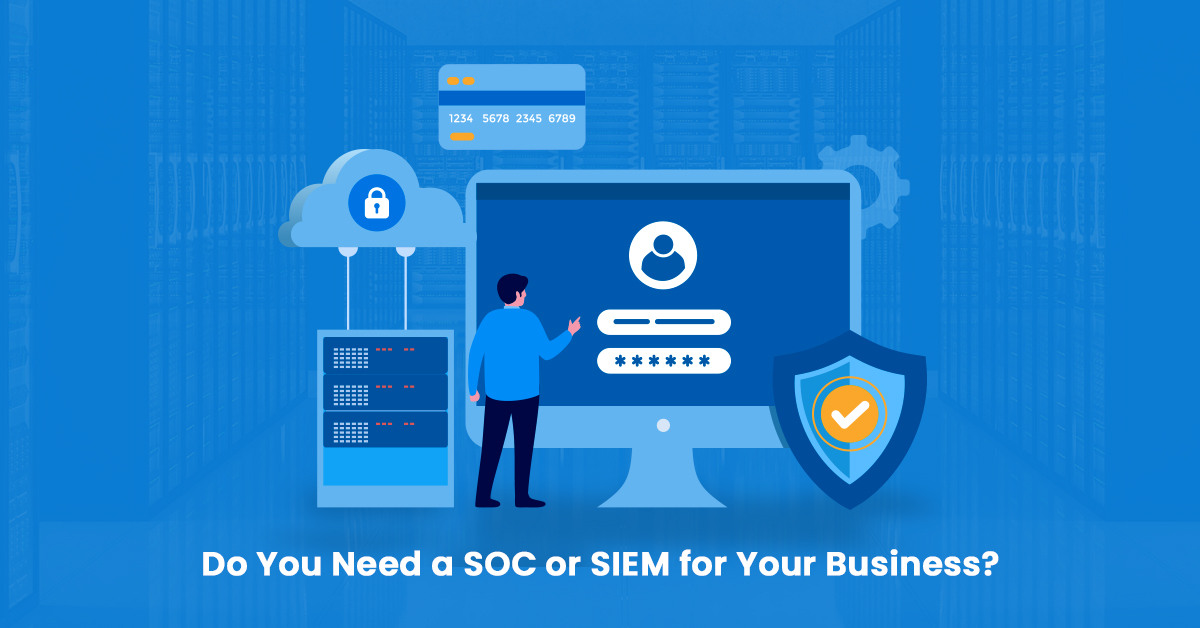
Businesses can efficiently monitor their cybersecurity state with the use of SOCs and SIEMs, two instruments. Even if it all sounds great, there is undoubtedly a price to pay. Do SOC, SIEM, or both make sense as investments for any business?
Only large companies can typically afford to build fully staffed SOCs with access to a powerful SIEM. However, it doesn’t follow that other, smaller businesses cannot use these two instruments. Through outsourcing, these cybersecurity technologies have helped a lot of other organizations. Organizations can establish a more robust security profile than they could if they tried to do everything internally by outsourcing SOC functions, SIEM management, or both.
A company can boost its cybersecurity profile by outsourcing each of these parts, but doing so simultaneously is frequently a more efficient and successful approach. When a business outsources just one part, two distinct entities must collaborate, which can occasionally be difficult or ineffective. However, by outsourcing them simultaneously, a company can avoid potential communication problems, delays, and uneven levels of knowledge and experience. This is frequently a wise business decision.
How to Choose the Right SIEM or SOC Solution provider
There are several factors to consider when choosing the right SIEM or SOC solution for your organization. These factors include the size of the organization, security needs, scalability, budget, and more. Here are some important factors to keep in mind while choosing a SIEM or SOC solution:
- Log sources – Before choosing a SIEM or SOC solution, identify the log sources in your organization, and understand the types of events that are sent to the SIEM or SOC solution.
- Security requirements – Before choosing a SIEM or SOC solution, understand the security requirements of your organization. You should collect the data based on the security needs of your organization. Make sure the SIEM or SOC solution can collect the data that is required by your organization.
- Scalability – Before choosing a SIEM or SOC solution, understand the scalability of the solution. The SIEM or SOC solution should be able to scale as your organization grows. It should be able to handle more data as the organization grows.
- Budget – Before choosing a SIEM or SOC solution for your organization get an idea of how much the solution costs.
Conclusion
In the end, SOCs and SIEMs are great tools to help any business up its cybersecurity game. Moreover, using these tools is possible even for small businesses through a SIEM service provider and SOC-as-a-Service provider.
- Top 5 Data Center Trends for 2024 - October 11, 2023
- Top 15 Cloud Computing Trends 2024 - October 4, 2023
- What is Infrastructure Monitoring and Why Infrastructure Monitoring Tool is Important for Your Business? - September 20, 2023
